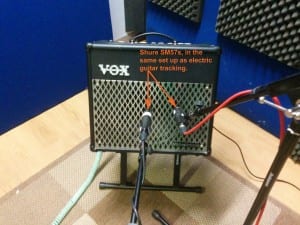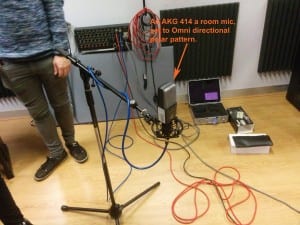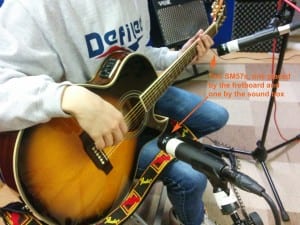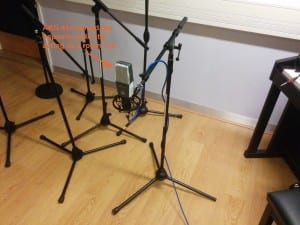When I began mixing my track I wanted to try and keep parity with the style of the original by Paolo Nutini, which meant maintaining a balance between drums and bass, whilst allowing guitar and vocals to shine through, as they are the focus of the song. The biggest change in my mix is the absence of any electric guitar. I listened back to the song several times, and just couldn’t see where I could fit the guitar in. It was too screechy and rough sounding, and cut through the bass and acoustic guitar. I tried listening with the electric guitar muted, and preferred the simple, calm quality the acoustic gave. I began with the drums, compressing and equalising the kick, equalising the overheads and the snare, and also gating both parts of the snare to remove some unwanted noise, which manifested as an unpleasant “bong” I also boosted some low frequencies in the room mic. My intention here was to produce a bit more energy from the kit, so I boosted lows in the kick and room, creating a nice impactful kick, and added highs to the overheads and snares to balance out the added bass, and also strengthen the cymbals, which we hadn’t miced.
When mixing the bass I chose to use the 414, as I preferred the range it had over the uniformly low tones of the D112. I compressed and EQed this to thicken the sound up, and was pleased with the result. I also EQed the DI, as it sounded tinny. I also reversed the phase on the DIs EQ plugin, as it produced a far warmer sound that mingled the two bass channels together.
For the vocals I compressed with a Vocal Compressor default, which I then modified, and then added some subtle reverb through an auxiliary, using D-Verb and a modified vocal plate setting. This was in an attempt to bring the vocals into the song more, as they sounded further off and disconnected.
I used this reverb for the solo as well, but I sent far more of the tracks to the reverb bus, and this produced a suitably rocky, mellow tone. I also experimented with automating the panning of the solo, and was inspired by Jimi Hendrix’s songs “If 6 Was 9” and “Bold As Love” to do so. I tweaked this to pan in time with one of the bends of each repetition.
During this time I automated the volume on the acoustic to lower, as I wanted the solo to become the focus. This also meant increasing the levels of the solo to -2.5dB. I added reverb to the acoustic track too, but as with the vocals I kept it subtle, only boosting the levels of the reverb for the final few strums of the song, after the vocals have stopped. I also compressed each track and EQed them all differently (see below), as well as panning left and right parts to 45 L and R respectively
I then bounced down the track and listened to it on my phone, both through its speakers and through headphones, and the bass and drums didn’t feel quite right. I brought the levels of the bass and kick up, along with the vocals, and also tweaked the panning of the solo to make it pan to less extreme levels. Reverb was made slightly more noticeable on the vocals and on the solo, and the levels of the solo were brought up again to -4.0dB. I also boosted the level of the Master Fader, as I felt the song sounded too quiet, when played on phones and other devices.
I would have provided exact EQ values, but my report has become quite lengthy, so if you would like these values, I would be more than happy to provide you with the .ptx file.
Level Balance Changes:
Bass 414B -13.5dB
Bass D.I. -14.1dB
Overhead Left -4.6dB
Overhead Right -4.9dB
Kick -13.2dB
Snare Top -9.8dB
Snare Bottom -8.9dB
Rack Tom -0.3dB
Floor Tom -0.3dB
Main Vocal -4.9dB
Solo Center -3.8dB
Solo Edge -4.0dB
Solo Room -4.0dB
Acoustic Left -3.6dB
Acoustic Right -3.6dB
Acoustic Room -3.6dB
Master Fader +2.1dB
Automation:
Solo panning L to R and R to L, approx. 75 to 75
Acoustic volume lowered during solo by -8.5dB
Reverb volume boosted in final acoustic section by +8.7dB



